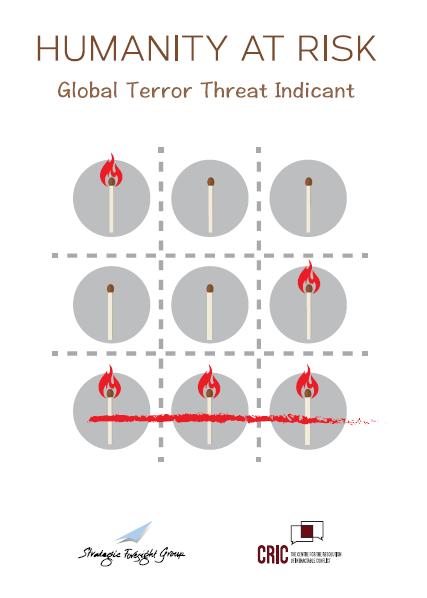Loretta Napoleoni, Insurgent Iraq - Al Zarqawi and the New Generation
|
|
February 2006
By Semu Bhatt
|
That the Bush administration mentioned the name of Abu Mos�€™ab Al Zarqawi as a link between Saddam Hussein and Al Qaeda while presenting its case to the United Nations for attacking Iraq, probably shocked no one more than Zarqawi himself. After all, at that time he was just one of the many jihadis swarming the Arab world. But that fateful day in February 2003, catapulted Zarqawi to world wide recognition as the new face of Islamic terror. He was suddenly being linked to all major terrorist attacks across Europe and the Arab world. When he first met Osama bin Laden in Kandahar in 2000, Al Zarqawi had rejected Osama's offer to become part of Al Qaeda network citing ideological differences. On December 2004, when Osama bin Laden anointed him as the Emir of Al Qaeda in Iraq, the phantom menace of Zarqawi-Al Qaeda nexus created by the US, turned into reality. This communion was a beneficial for both the concerned leaders. Osama bin Laden, who himself was trapped somewhere on the Afghanistan-Pakistan border, wanted to cash in on Al Zarqawi�€™s popularity in Iraq for Al Qaeda�€™s objectives. Al Zarqawi on the other hand was against a united Sunni-Shi�€™a national resistance front against the occupying forces in Iraq, as this would have left no room for any role play by foreign jihadis like himself. He, as a foreigner, did not have any standing with the Iraqi Sunni groups, so he wanted the legitimacy of Emir of Al Qaeda to gain support of the Sunni groups against the majority Shi�€™ites whom he termed as apostates.
Loretta Napoleoni�€™s Insurgent Iraq: Al Zarqawi and the New Generation traces the truth behind the myth of Abu Mos�€™ab Al Zarqawi, and in the process introduces us to the new generation of jihadis, evolution of the idea of jihad and the true nature of insurgency in Iraq.
The early chapters of the book deals with the life of young Al Zarqawi, born as Ahmad Fadil al-Khalayleh in the poverty of Jordanian city of Zarqa, and the events in his life that molded his character �€“ including his involvement in petty crimes at a young age; an uneventful stint in Afghanistan due to his arrival towards the end of the Soviet occupation; encounter with Al Maqdisi in Pakistan and adoption of radical Salafism that calls for a total rejection of western values and influence; return to Jordan in 1993 and subsequent imprisonment for his subversive activities against the Jordanian regime; impact of five years of torture and intermittent periods of solitary confinements in prison, and evolution of strong religious and leadership qualities during the same period. Upon his release from the prison in 1999, he once again landed in Afghanistan, where with the help of Taliban regime, he established a training camp in Herat to train suicide bombers for attacks in their home countries. It was this camp in Herat that served as one of the points of connection that the US held to show a nexus between Al Zarqawi and Al Qaeda.
This part also provides detailed information on actors and issues that played an important role in creation of an insurgent Iraq. It chronicles the evolution of Wahabism and Salafism and the eventual emergence of a new radical jihadi ideology in Iraq; the growing disillusionment of Arab youth with their regimes; the crisscrossing worlds of criminals and jihadis in the Arab world; and the role of countries like Jordan, Egypt, Saudi Arabia, Pakistan and Iran in supporting or alienating the jihadis. The author also gives a detailed account of the opportunistic attitudes exhibited by both state and non-state actors, to meet their own larger objectives.
Second half of the book analyse the true nature of insurgency in Iraq and the parties involved in the struggle. In current situation, most of the terrorist attacks and kidnappings in Iraq are blamed to Zarqawi�€™s network. The author begs to differ by stating that Iraq is witnessing various types of insurgencies; each being waged with a different goal in mind. She states, �€œBeyond the myth of al Zarqawi there is a much more frightening reality made up of complex forces: independent Iraqi jihadist groups that gravitate towards Al Qaeda in Iraq; Islamo-nationalist and Ba�€™ath party resistance fighters; ethnic conflict among the Sunni, Shi�€™ites and Kurds; fully armed and active ethnic and religious militias; and an endless stream of foreign suicide bombers.�€
Instead of focusing hard on the ground realities, the myth of Al Zarqawi is now used by the US to blur the nature of true insurgency in Iraq. Al Zarqawi on his part is using his superstardom to communicate his radical ideology to the billions of Muslims across the world through Internet and videos. Such Zarqawi-centric approach will eventually lead to a civil war between various sectarian and ethnic groups in Iraq. Also, the projection of Al Zarqawi as the central character behind the anti-US resistance in Iraq will boost already burgeoning jihadi activities in the region and abroad.
The most interesting section of the book deals with the creation of �€˜al Qaedism�€™ �€“ a global radical, anti-imperialist doctrine that calls for a direct violent confrontation with the West and legitimizes violence against civilians, who as citizens are held responsible for the actions of their leaders. The new ideology ignores basic Islamic tenets and allows for killing of fellow Muslims who are accused of apostasy. Al Qaedism as an ideology holds a potent, messianic appeal to a section of radical Muslims, especially amongst unemployed and disenfranchised young men, and as such has become a powerful recruitment tool for potential jihadis across the world. Unlike anti-Soviet jihad when suicide was acceptable only in very special circumstances, suicide missions form the core of this new ideology; suicide bombers have replaced the concept of mujahideen, the warriors whose task was to fight. Unlike mujahideen of the yore, followers of al Qaedism hide their political ideology and their willingness to die for it. They have no or very few direct links with the leadership. They have no or very little psychological or physical training. Daily suicide bombing attacks in Iraq and the recent suicide attacks in London proves that the war on terror is now against an enemy ideology, and not a particular organization or leader. Thus, the war on terror, the politics of fear and creation of myths like the one of Al Zarqawi, have transformed a transnational, yet limited membership terrorist organization into an ideology that is spreading its tentacles across the world. And the US attempts so far to personalize that ideology, has failed miserably.
The author mentions that the US has now come to admit that military victory in Iraq might not be possible and has shown willingness to enter into dialogue with various groups. However, Iraq is mushrooming with numerous jihadi, sectarian, ethnic and nationalist groups. However, the big dilemma for the US is to device a formula on how to engage this multitude of groups into a political dialogue, and to improve socio-economic conditions of the country to dissuade young people from joining insurgent groups. One cannot be certain on whether the Americans will manage to stabilize Iraq or will be able to maneuver a face-saving exit from the country. But one can certainly predict that al Qaedism will continue to manifest its devastating presence in the Arab and Western worlds in the decades to come.
The book is recommended for those who want to understand the complexity of the Iraq imbroglio, and the contribution of the US in creating and sustaining it. It is a must, must read for all the Americans, who would serve their own purpose better by trying to grasp the gravity of consequences emanating from the foreign policy decisions taken by their leadership.
Related Publications
Related latest News
Related Conferences Reports
-

P5 Experts Roundtable on Nuclear Risk Reduction
Download:Geneva Roundtable Report
-

Roundtable on Global Security and Catastrophic Risks
Download:Report on RT revise





